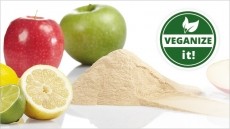Fairtrade growth brings benefits to 1.2 milion producers and workers
The Fairtrade Labelling Oraganization (FLO), which represents 23 certifying organisations and owns the Fairtrade mark that signifies that the standards underlying it have been met, this month published the second edition of its monitoring and evaluation report entitled The Benefits of Fairtrade. It is based on data from audits conducted in 2008, which indicated that 1 million producers benefited from Fairtrade in 2008. The 1.2 figure is calculated based on growth rates for 2009.
The data also showed that Fairtrade’s greatest presence is in East Africa, with 47 per cent of the 850,000 farmers in small producers organisations based there, and 38 per cent of workers in Fairtrade registered plantations.
Growth in certified producers exceeded 25 per cent in the Caribbean, Central America, Middle Africa and Southern Asia; the number of workers employed on Fairtrade plantations grew by 50 per cent in Southern Asia.
Coffee is the biggest product for Fairtrade certifications with almost half a million farmers around the world now receiving Fairtrade prices and premiums. Coffee producers in the system sold 68 per cent of their total sales volume as Fairtrade, while honey producers sold 82 per cent, and banana producers 71 per cent.
The report “enables FLO to build up a more complete picture of the certified farmers, workers and organisations and how they may benefit from Fairtrade”, said the organisation. “Ultimately, FLO wants to know if Fairtrade is making a significant difference to producers.”
Short term impacts
The new monitoring and evaluation report uses twelve indicators to build up a picture of the short-term impacts of the certification and labelling scheme for producers. This approach is seen as a first step towards developing a comprehensive impact assessment system; the second step, currently underway, is to gather information about its long-term effects through case studies and academic research.
Next year FLO plans to bring together these two approaches in the final stage, to develop a complete picture of Fairtrade impacts in both the short and the long term.
The 12 indicators that form the basis of the new report are:
Number and type of Fairtrade certified producer organizations
Number of member organizations of Fairtrade certified small producer
Number of members and number of workers of Fairtrade certified producer organizations
Total number of male and female members and workers of Fairtrade certified producer organizations
Total and average area of land used by small producer organizations for cultivating Fairtrade certified products
Production capacity of Fairtrade certified producer organizations
Average yield per hectare of certified small producer organizations
Total Fairtrade premium received by Fairtrade certified Producer organizations
Total Fairtrade Premium spent by Fairtrade Certified Producer Organizations
Total Fairtrade sales volumes
Total Fairtrade sales revenues
Average price received for Fairtrade sales and for non-Fairtrade sales
The data used in the report was collected from audit reports of member organisations.
The full report is available here





















